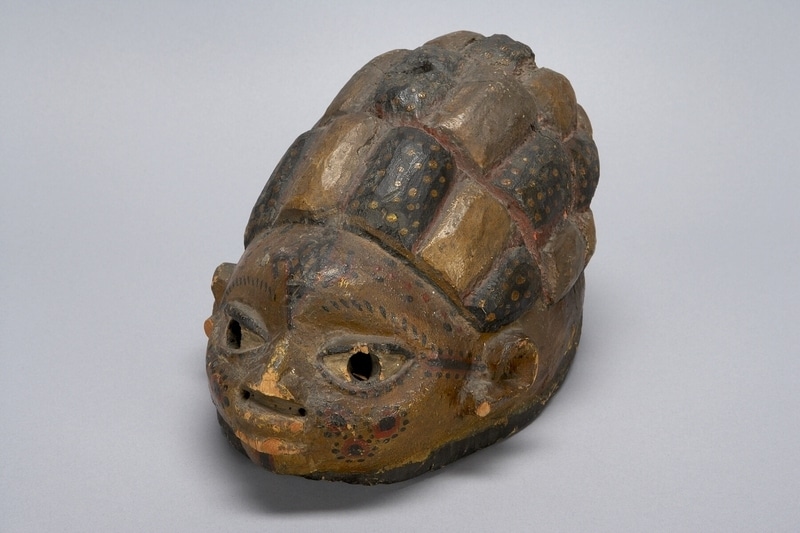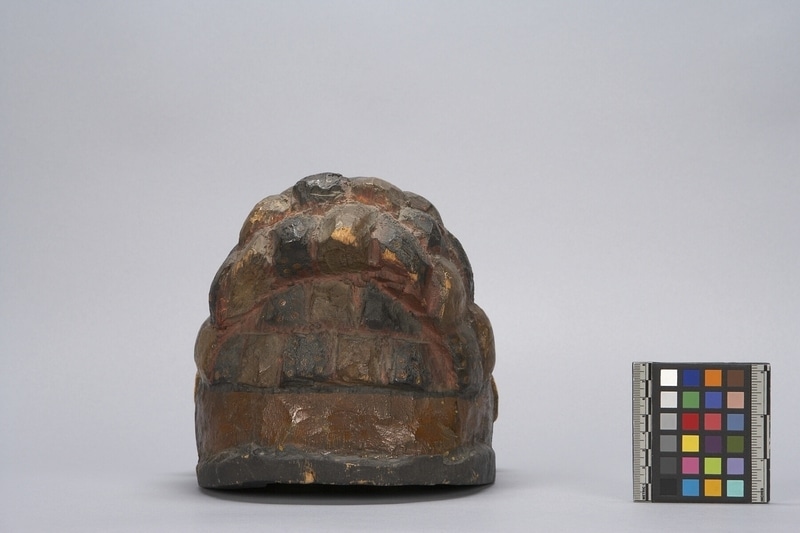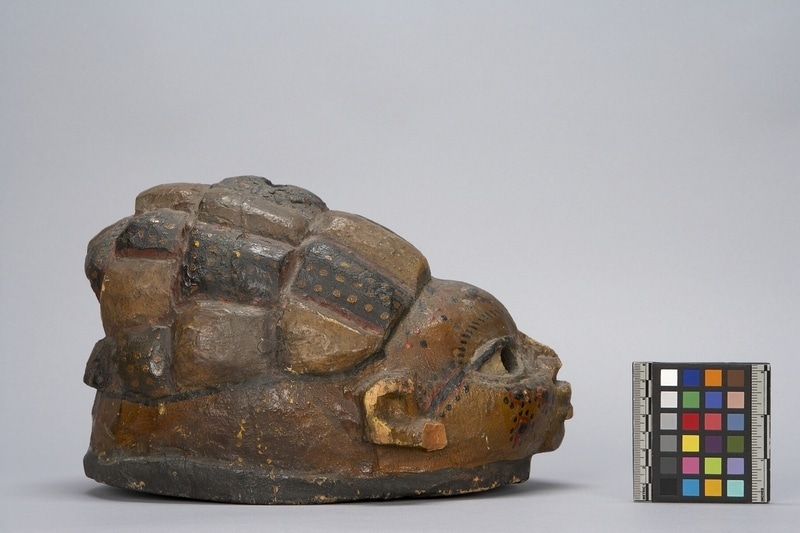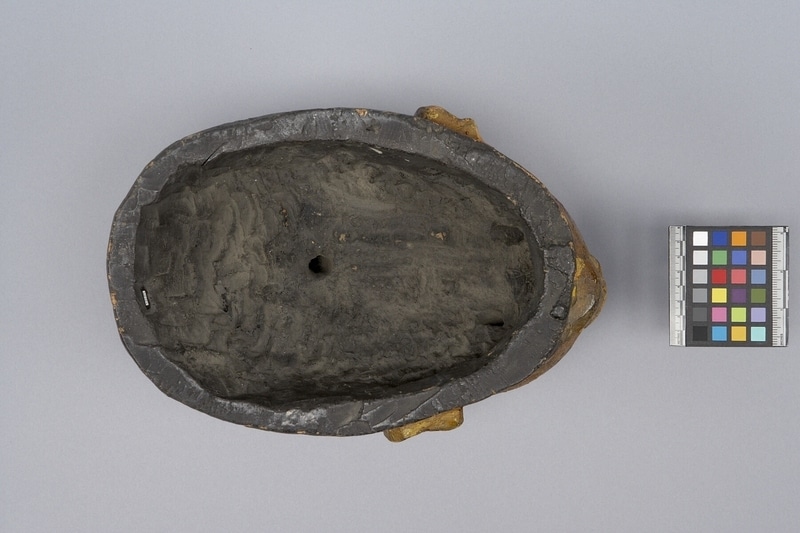Gelede Mask Item Number: 1373/1 from the MOA: University of British Columbia





Description
Human face mask with oval-shaped base. Hair section takes up two-thirds of the mask and extends upwards at an angle. Hair on mask has three rows of raised rectangular sections that are painted with alternating colours of yellow, and black with yellow dots. The face takes up one-third of the mask. The face has oval-shaped cut-out eyes that taper at the corners, a small nose, a slightly defined mouth, and protruding ears. Forehead, eyebrows, cheeks and chin are decorated with black and red painted designs.
History Of Use
The gélède mask is worn more like a headdress, on top of the head, by male dancers. The masks are worn during Yoruba Gelede festivals which honour women, both living and dead, in particular the powerful "Mothers" (awon iya wa), a group that includes female ancestors and deities, as well as elderly women of the community. When dancers perform the Gelede dance they are displaying the powers of their female ancestors, who are considered to the beginning of the nation, makers of community and the protectors of children. They have the ability to affect the wellbeing of individuals or the community in positive and negative ways. The Gelede ceremony is divided into two parts: the efe, which takes place at night and features a humorist praying for the community, and the ijo osan, the daytime dance that is commonly referred to as Gelede.
Iconographic Meaning
One narrative for the origin of the Gelede dance is that after Yemoja, the water goddess and mother of all spirits, performed a spirit dance by the river she gave birth to two children. Her daughter was a dancer and was called Gelede because of her weight; Yemoja’s son was called Efe because he was a humorist. The names of the children and their traits could then inform the parts of the Gelede ceremony. Female gelede masks are larger and are used for dancing, and the efe nighttime ceremony involves a humorist. The facial marks on this mask differ from typical gelede masks; this mask could then represent an individual from a different tribe and/or royalty, a female orisa (spirit) or someone of significant beauty.
Cultural Context
Gelede festival dances.
Item History
- Made in Nigeria
- Owned by Helen Purkis before May 30, 1989
- Received from Helen Purkis (Donor) on May 30, 1989
What
Who
- Culture
- Yoruba
- Previous Owner
- Helen Purkis
- Received from
- Helen Purkis (Donor)
Where
- Holding Institution
- MOA: University of British Columbia
- Made in
- Nigeria
When
- Ownership Date
- before May 30, 1989
- Acquisition Date
- on May 30, 1989
Other
- Condition
- good
- Current Location
- Case 98
- Accession Number
- 1373/0001